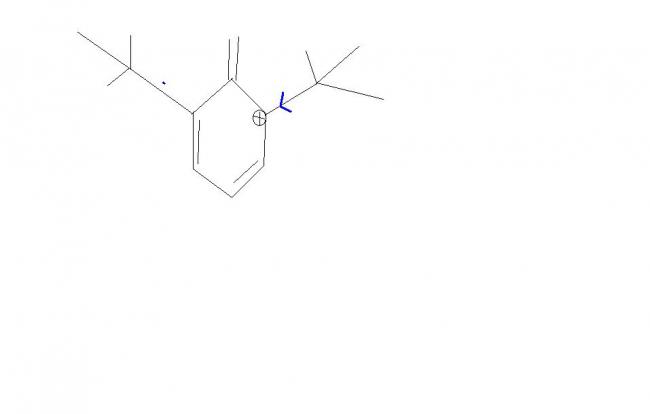if 1>2>3

there will be more stabilisation of positive charge if delocalisation takes place ......this due to hyperconjugation effect...
for 1..4 H atoms
2..2H atoms
3.1 H atom
if 1>2>3

there will be more stabilisation of positive charge if delocalisation takes place ......this due to hyperconjugation effect...
for 1..4 H atoms
2..2H atoms
3.1 H atom
although rocky's explanation is wrong, i think the answer given by him is correct (1>2>3)
In 1, there can be delocalisation to give extra stability (benzyl cation).
In 2, there is more steric hindrance, so delcocalisation lessens
In 3, delocalisation is the least due to max steric hindrance,
And the hyperconjugation factor is same for both.
So 1>2>3
he btw changed his ans [3]
but how hyperconjugation is sqame in all three
i mean if we draw other resonating structure as shown by rocky in figure
for first one der r 3 alpha H
for second 1 alpha H
and for 3rd 0 alpha H
see the hyperconjugation effect in the MOST STABLE resonance form (which is the case when the aromaticity of the ring is preserved)
There all have 6 Hyperconjugative H
for A there are 6 hyperconjugative H
for B there are 7 "
generally stability order is:
R2C=CR2 > R2C=CRH > R2C=CH2 > RHC=CRH (trans>cis) > RHC=CH2 > CH2=CH2
as the system is resonance stabilized when the carbocataion formed at 1st position no of hyper congugation system in 1 is 3 ,in 2 it is 1,in 3 it is 0 so1>2>3
@pratik , think a lil bit more ,
@ ashish you are right , the increase in repulsion between the groups increases .
hence the carbocation moves out of plane increasingly , as planarity is one of the criterion for interaction between the carbocation and the benzene ring , we can safely say that the order is 1>2>3